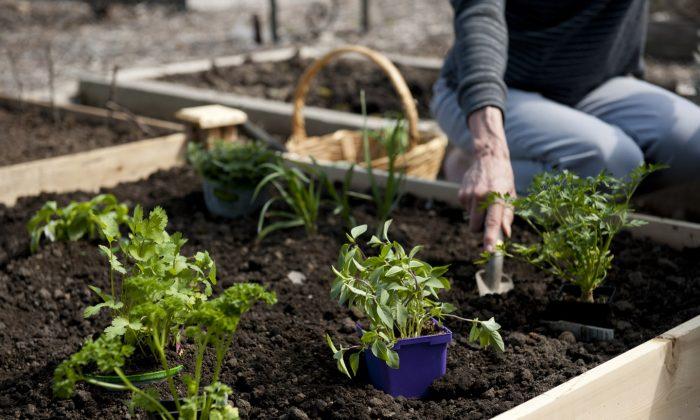Growing basil, oregano, thyme, and parsley—the most popular culinary herbs—can be rewarding, fun, and easy with a raised garden bed.
Raised beds have advantages over other methods. They offer excellent drainage and water retention, improved soil, and ease of planting and weeding. Ready to assemble raised garden bed kits come in all sizes and heights. A 4x4-foot bed is a nice compact size and will hold many plants.
Find an area in your yard that has direct sun for at least 4 to 6 hours a day. Remove any existing plant growth, otherwise it will reappear in the new herb bed and will be harder to remove.
Assemble the kit and place it in the cleared area. Fill the raised box with equal amounts of organic dirt, compost, and peat moss. Mix by turning the substances over with a shovel, and level with a rake. Add granulated organic fertilizer when planting, and periodically throughout the growing season. Organic fertilizer is best, as what is put in the soil is carried up into the plant and then eaten.
There are many references for herb varieties and spacing requirements, so plan the garden layout accordingly. Ideally, buy plants from heirloom or organic growers.
Here are some tips for growing herbs
Good biennials are oregano, thyme, chive, parsley, and mint. Annuals such as basil and dill are a must too. Try various basil varieties to find favourites. Plant two varieties of thyme, with lemon thyme being one, but thyme is strong, so only plant one or two of each variety.
Sage, fennel, tarragon, and marjoram are other excellent herbs for garden bed kits, but over time will get too big for the space and will have to be transplanted elsewhere.
As soon as flower blooms appear, cut them off as they stop plant growth and eventually make them bitter-tasting. Chives are an exception; chives should be allowed to flower and then cut down to a couple of inches from the ground.
Mint spreads quickly, so should be planted in a plastic container with holes in the bottom. Sink container into the ground, leaving three inches or more above the surface. Standard mint is rather bland, so try a spearmint or peppermint. Don’t plant different mint varieties in the same area as cross-pollination will destroy the flavour of each variety.
Only grow edible herbs in your herb garden so there is no confusion as to what can be eaten. Place plant identification markers next to the herbs as well.
As much as I enjoy my flower beds, the raised herb beds are my favourite. I use the herbs in cooking, salads, bouquets for their fragrance, and for drying or freezing for future use.





Friends Read Free